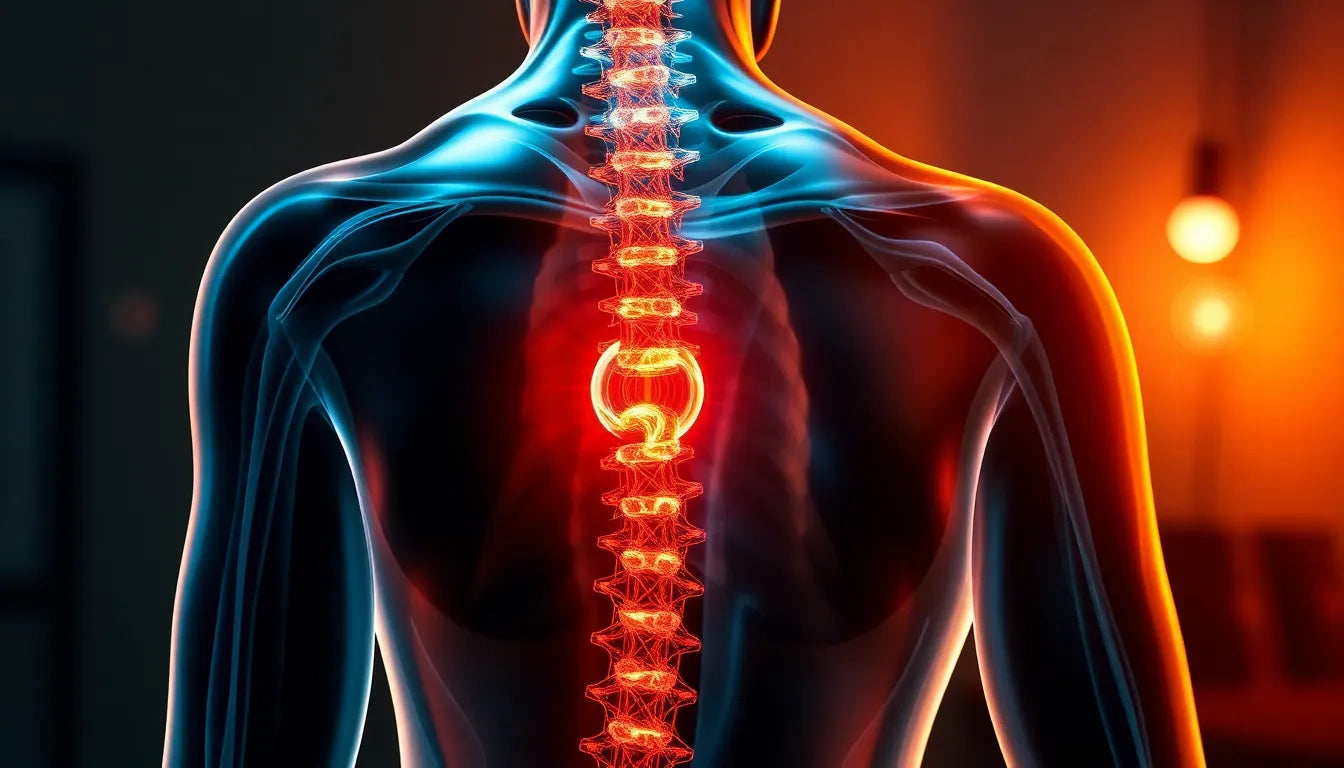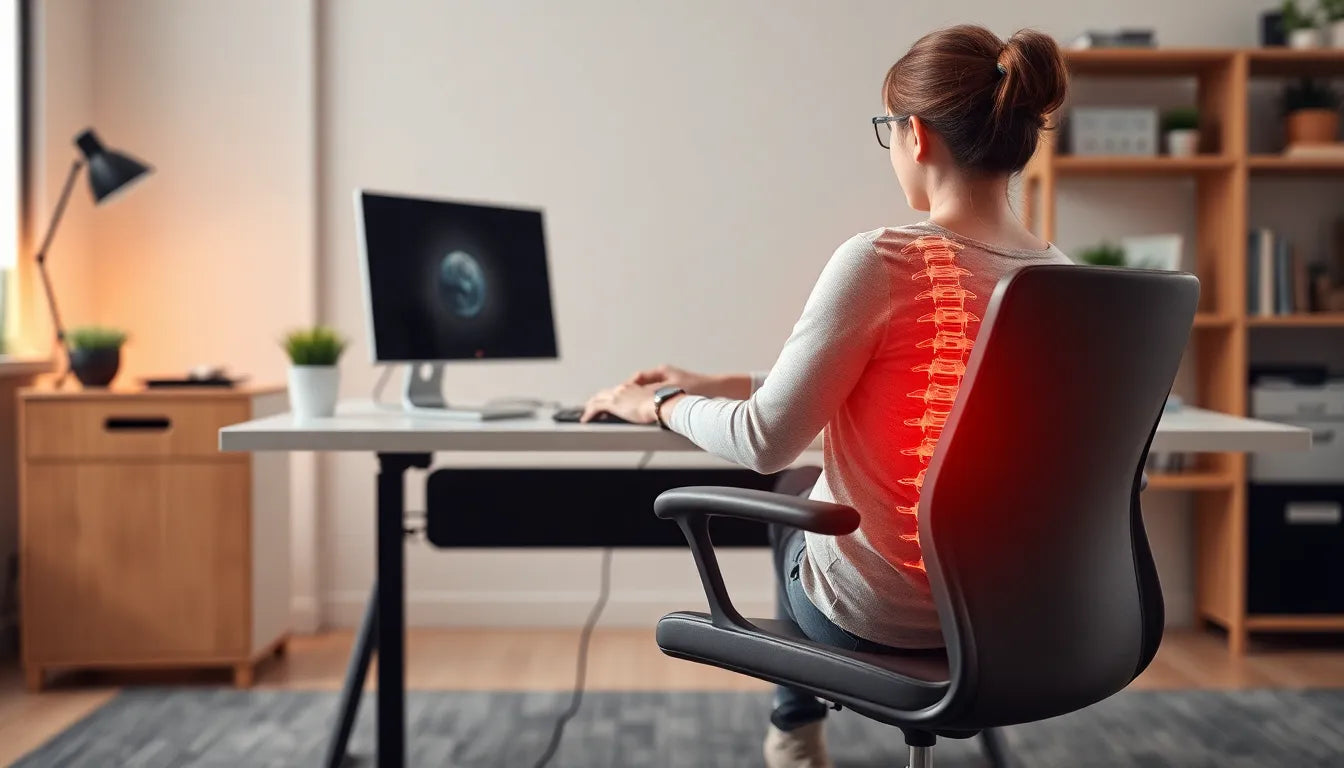Imagine waking up one morning with a sharp, shooting pain radiating down your arm or leg, making even the simplest movements feel like a daunting challenge. For many, this scenario is all too familiar and often signals a common spinal issue: a herniated disc. But what exactly is a herniated disc, and why does it cause such discomfort?
Understanding a herniated disc
A herniated disc, often referred to as a slipped, bulging, or ruptured disc, occurs when the soft, gel-like center of a spinal disc pushes through a tear in its tougher exterior. This condition is not only a frequent cause of back pain but also a source of significant discomfort that can affect your daily life. Spinal discs act as cushions between the vertebrae in your spine, providing flexibility and supporting movement. When one of these discs herniates, it can lead to pain, numbness, or weakness, typically affecting one side of the body.
Anatomy and prevalence
To fully grasp what happens when a disc herniates, it's essential to understand the anatomy involved. The spine is composed of a series of vertebrae, each separated by spinal discs that serve as shock absorbers. These discs consist of a soft interior called the nucleus, surrounded by a tougher exterior known as the annulus. When the nucleus protrudes through a tear in the annulus, it can press on nearby nerves, leading to the symptoms associated with a herniated disc.
Herniated discs most commonly occur in the lower back, known as the lumbar region, but they can also affect the cervical spine in the neck. This condition is prevalent, with many individuals experiencing it at some point in their lives, particularly as they age. Understanding the prevalence and mechanics of herniated discs is crucial for recognizing the symptoms and seeking appropriate treatment.
In the following sections, we will delve deeper into the specific causes, risk factors, and symptoms associated with herniated discs, providing a comprehensive guide to help you manage and alleviate the discomfort they bring.
Detailed anatomy of a herniated disc
To fully understand what happens when a disc herniates, we must delve deeper into the anatomy of a spinal disc. Each disc is made up of two main components: the nucleus and the annulus. The nucleus is the soft, jelly-like center that acts as a shock absorber, while the annulus is the tough, rubbery exterior that provides structure and protection. A herniated disc occurs when the nucleus pushes through a tear in the annulus, often as a result of degeneration over time. This displacement can cause the disc material to press against nearby nerves, leading to the painful symptoms associated with this condition.
Visualizing this process can be incredibly helpful, as it illustrates how the integrity of the spinal disc is compromised. Imagine a jelly doughnut being squeezed until the jelly escapes through a weak spot in the dough. Similarly, when the nucleus protrudes through the annulus, it can impinge on the spinal nerves, causing pain, numbness, or weakness in the affected area.
Causes and risk factors for disc herniation
Several factors contribute to the development of a herniated disc. One of the most common causes is the natural wear and tear that occurs as we age. Over time, spinal discs lose some of their water content, making them less flexible and more prone to tearing. Sudden injuries or excessive pressure on a weakened disc can also lead to herniation. For instance, lifting heavy objects improperly or experiencing a fall can cause a disc to slip out of place.
There are also specific risk factors that increase the likelihood of developing a herniated disc. Age is a significant factor, as discs naturally degenerate over time. Obesity adds extra stress to the spine, increasing the risk of disc herniation. Additionally, occupations that involve repetitive motions, heavy lifting, or strenuous physical activity can put individuals at a higher risk. Understanding these causes and risk factors is crucial for prevention and early intervention.
Recognizing symptoms of a herniated disc
The symptoms of a herniated disc can vary depending on the location of the affected disc. Common symptoms include pain, numbness, or weakness in the limbs, typically affecting only one side of the body. For instance, a herniated disc in the lower back, or lumbar region, often results in pain radiating down the leg, known as sciatica. Conversely, a herniated disc in the cervical spine, or neck, can cause pain and numbness in the shoulder, arm, or hand.
It's important to note that certain movements or positions can exacerbate the pain. For example, sitting for extended periods, bending forward, or twisting the torso can increase discomfort. In severe cases, individuals may experience significant weakness or sensory changes, such as tingling or a burning sensation. Recognizing these symptoms early is essential for seeking appropriate treatment and preventing further complications.
To help visualize the differences in symptoms based on disc location, consider the following comparison:
| Disc Location | Common Symptoms |
|---|---|
| Lower Back (Lumbar) | Pain radiating down the leg (sciatica), numbness or tingling in the leg or foot, weakness in the leg muscles |
| Neck (Cervical) | Pain in the shoulder, arm, or hand, numbness or tingling in the arm or fingers, weakness in the arm muscles |
Understanding these symptoms and their variations is crucial for individuals experiencing back pain to seek timely medical advice. Early diagnosis and intervention can significantly improve outcomes and reduce the risk of chronic discomfort.
Diagnosis and treatment of herniated discs
Understanding the pain caused by a herniated disc is the first step towards effective management and recovery. Diagnosing a herniated disc typically begins with a thorough physical examination and a review of the patient's medical history. During the exam, healthcare providers may perform specific tests, such as the straight leg raise test, which can indicate a herniated disc in the lower back if lifting the leg causes pain. Similarly, increased pain when bending the head forward might suggest a cervical disc issue.
Once diagnosed, treatment for a herniated disc can range from conservative measures to surgical interventions, depending on the severity of the condition. Most individuals find relief through non-surgical methods, which include rest and self-care practices like applying ice or heat and engaging in gentle stretching exercises. Physical therapy plays a crucial role in recovery by strengthening the muscles around the spine, improving flexibility, and reducing the risk of future injuries.
For pain management, doctors may recommend over-the-counter pain relievers or prescribe stronger medications if necessary. In some cases, epidural injections are administered to reduce inflammation and alleviate pain. Surgery, such as a discectomy, is usually considered only when conservative treatments fail to provide relief, or if the herniated disc causes severe symptoms like significant weakness or loss of bladder control.
It's worth noting that many herniated discs heal naturally over time, typically within four to six weeks. However, early diagnosis and appropriate treatment are essential to ensure a smooth recovery and prevent chronic pain.
Conclusion
In summary, understanding what happens when a disc herniates is crucial for managing the associated pain and discomfort effectively. By recognizing the symptoms early and seeking timely medical advice, individuals can significantly improve their outcomes. Treatment options vary, but many people find relief through conservative methods, with surgery being a last resort. If you experience symptoms of a herniated disc, consulting with a healthcare professional is essential for an accurate diagnosis and appropriate treatment plan.
Frequently Asked Questions
What causes a herniated disc?
A herniated disc can result from natural degeneration, injury, or pressure on a weakened disc area. Age-related wear and tear, obesity, and occupations involving heavy lifting are common contributing factors.
What are the symptoms of a herniated disc?
Symptoms include pain, numbness, or weakness in limbs, typically on one side of the body. The exact symptoms can vary depending on the location of the herniated disc, such as the lower back or neck.
How is a herniated disc diagnosed?
Diagnosis involves a physical exam, medical history review, and specific tests like the straight leg raise test for lower back issues. These help pinpoint the affected area and confirm the presence of a herniated disc.
What treatment options are available for herniated discs?
Treatments range from self-care practices and physical therapy to medications and, in severe cases, surgery. Many people experience improvement with conservative treatments, while surgery is reserved for persistent or severe cases.
Can a herniated disc heal on its own?
Yes, many herniated discs heal naturally within four to six weeks with appropriate care and management, such as rest, physical therapy, and pain management strategies.
Sources
- Mayo Clinic. "Herniated Disk: Symptoms and Causes."
- Cleveland Clinic. "Herniated Disk: Overview."
- American Association of Neurological Surgeons. "Herniated Disc: Overview."
- Physiopedia. "Herniated Disc."
- Atlantic Spine Center. "Herniated Disc Symptoms and Treatment Options."
- Penn Medicine. "Herniated Disc: Conditions Treated."


















